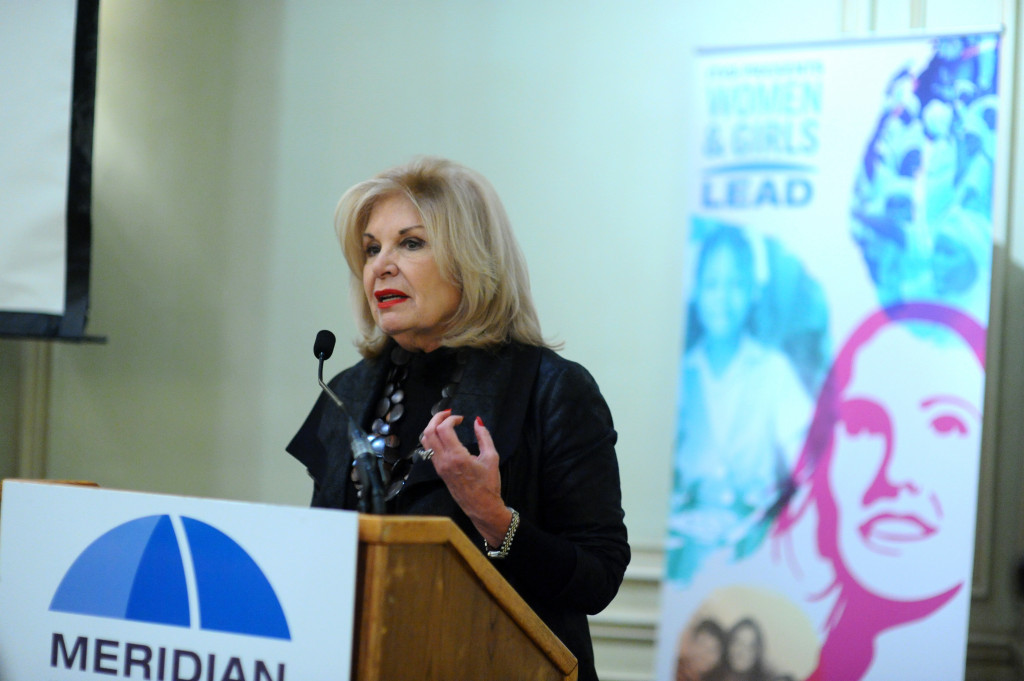Women make up more than 50 percent of the world’s population, yet account for less than 1 percent of global wealth. Despite great strides, there remains a wide gender gap in the international economy. Entrepreneurship is key to closing that gap as it gives women control and ownership, but they need greater support to tap into this economic driver.

Women remain substantially under-represented as entrepreneurs, not just in countries where the basic rights of women are a struggle, but in the United States as well. Although women account for just over one third of all types of businesses, women-owned businesses account for only 16 percent among high growth firms in the U.S. What contributes to the low percentage of women represented among high growth companies? Why is there such a huge gender imbalance in the entrepreneurship world?
Women face many barriers when starting or growing their businesses, particularly in accessing education, training, markets, capital, and land and property rights. According to the UN Development Program, 75 percent of the world’s women cannot obtain bank loans. Moreover, a Gallup entrepreneurship study from 2014 illustrates the significance of leadership skills, confidence, and broad networks for success, but women have limited opportunities in developing them. This is especially true in countries where stringent social and cultural restrictions oppose women joining the work force.

We need to create an enabling environment in which women entrepreneurs can thrive. Collaborative partnerships among a variety of stakeholders from both the public and private sectors are critical in creating such an environment. Therefore, concrete action must be taken to ensure that women entrepreneurs have 1) full participation in education, training, and technology; 2) access to credit, capital, and markets; and 3) representation in decision-making positions and governance structures.
It is encouraging that women-owned enterprises are being recognized as major contributors to community economic empowerment and systemic barriers are being lifted. This has led to the creation of a number of public and private sector initiatives aimed at supporting women and strengthening their businesses.
As an example, Goldman Sachs’ 10,000 Women Initiative has had great success with a multifaceted approach to assisting women with capital, operational knowhow, and networks. Within two years of graduating from the program, 69 percent of participants increased revenue and 58 percent added jobs. Coca-Cola and Walmart have also launched initiatives focused on assisting women business owners in their respective global supply chains. Additionally, global financial institutions like the World Bank funds programs targeted for women entrepreneurs.
Meridian International Center and other public sector organizations attempt to close the gender gap by supporting women entrepreneurs with leadership development and empowerment. For one such project, Meridian partners with the U.S. Department of State in administering the African Women’s Entrepreneurship Program (AWEP). Designed to promote business growth, increase trade, and create better business environments, African women entrepreneurs are empowered and encouraged to become voices of change in their communities. This is especially crucial as women hold less than 1 in 5 paid jobs in non-agricultural sectors in North Africa. At the AWEP Business-to-Business Showcase, participants present their products to an audience of US-based corporations, NGOs, and government officials. Such opportunities are vital to grow the networks of women entrepreneurs, increase their leadership potential, and get concrete feedback from experts.

Entrepreneurial women will be a critical part of a successful future world economy. They have already demonstrated their ability to generate substantial revenue, employ people in their communities, and be a tool of economic mobility for their families. Access to funding streams, diverse industries, and networks are in short supply for women, but an entrepreneurial spirit is not. Despite being under represented, women are rising in influence and achieving transformative gains for society. This is clearly evident from Fortune’s 2014 ranking of the 50 most powerful women in business, which features an all-time record of 24 large-company CEOs in its pages. These women are leading – and in many cases pushing through innovative transformations, even in traditionally male dominated industries such as technology, energy, automotive, and defense.
While women entrepreneurs have great potential to make a significant contribution to the global economy, we need to do much more to engage this untapped and underutilized resource in the engine of growth and innovation. Public-private partnerships across the globe are integral to tip the balance in favor of women’s entrepreneurship. By opening the doors for women to have greater access to capital, markets, education, training and mentoring, land rights, healthcare and affordable childcare, we can equip them with the skills and capacity needed to get to the next level in their entrepreneurial journey and our shared future.
This piece was originally published in the March 2015 edition of the Diplomatic Courier.















